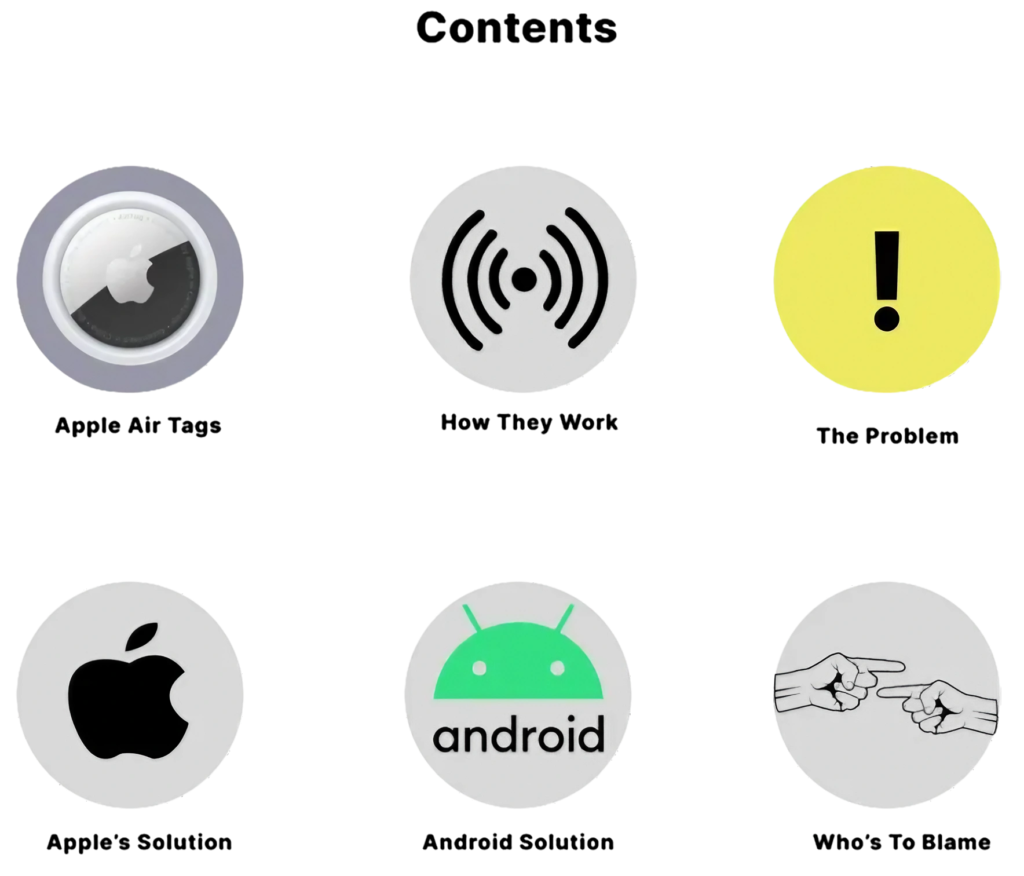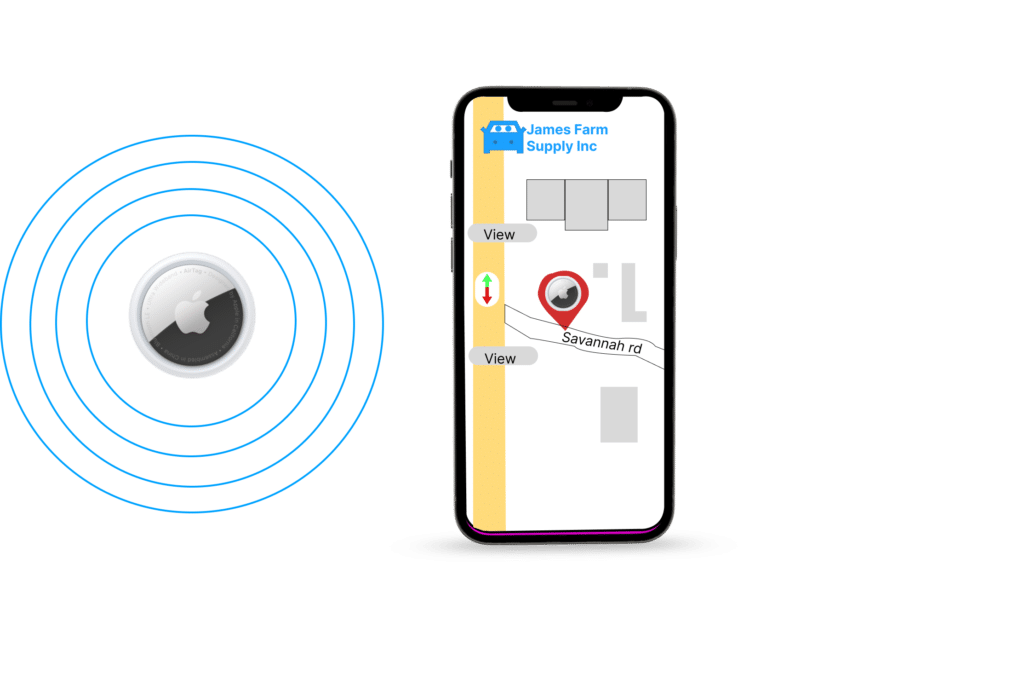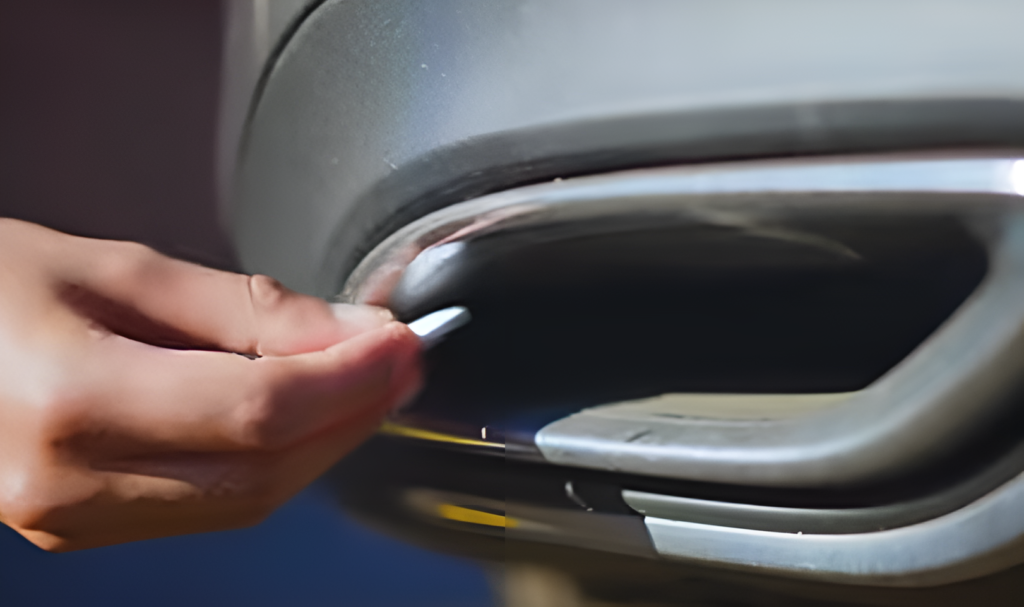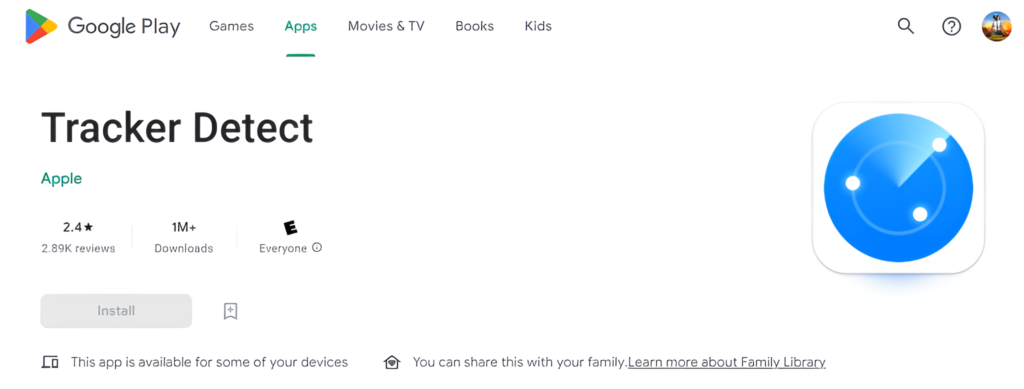Apple Air Tags

Apple’s Air Tags are small, discreet tracking devices that can be attached to personal belongings to track their location. They were released in 2021 and are relatively inexpensive, with a four-pack costing $99, making them just $25 each.
How They Work
They use Bluetooth technology to communicate with nearby Apple devices to determine their location, and they can even be tracked globally with almost pinpoint accuracy. This is made possible by the fact that the Air Tags don’t need to communicate with networks directly. They are built to piggyback off the GPS and signals of other Apple products. This means that all the Air Tags need to do is send out a continuous Bluetooth signal,

and that signal can be picked up by any nearby Apple device, using that device’s location to figure out where the Air Tag is and then sending that information back to the owner.
The Problem

However, the same features that make Air Tags useful for keeping track of personal possessions also make them an attractive tool for criminals. They can be used to steal possessions, hijack cars, and even follow people home. There have been reports of Air Tags being found hidden in vehicles, behind number plates, and even in people’s clothing after being followed home at night. The low cost and ease of use of Air Tags make them a concern for privacy and security.
Another concern is the technology inside the Air Tags. On the surface, it may look like a simple plastic and steel button, but inside is a speaker, antenna, Bluetooth chip, Apple’s custom-made U1 chipset and a replaceable battery.

It might seem like it uses GPS to get location data, but it does not. The reason Apple has managed to make Air Tags so inexpensive and the reason that one battery can last for an entire year is that Air Tags don’t need to communicate with the networks directly. They are built to piggyback off the GPS and signal of other Apple products.
This means that even if someone is using an Android device, the tracking still works because every time they come within 30 feet of even someone else’s Apple device, the Air Tag will be able to use that device’s location to update its position. So, imagine that someone is walking around with an Air Tag in one hand and an iPhone in the other. Because there is an iPhone right next to it, the Air Tag will always be displaying its exact location using that iPhone signal. But even if someone is using an Android device, the tracking still works because every time they come within 30 feet of even someone else’s Apple device, the Air Tag will be able to use that device’s location to update its position.
so hopefully you’re starting to see why air tags are becoming such a controversy imagine this scenario you’ve spent your whole life working so that you can afford to buy yourself a really nice car but one day you’re driving this nice car around and someone else decides that they like it too.
So they grab an airtight stick it into your car exhaust and then all of a sudden theoretically

for up to a year because that’s how long the battery lasts they’ll be able to see exactly which shops you’re going into which restaurants you’re eating in and most importantly where you live and where you park this extremely nice valuable vehicle and think how easy is it to slap one of these on a car i can put one here i could put one here I could put one here it might as well be invisible.
The ultra-wideband technology, thanks to the U1 chip on the Air Tag, also allows for pointed directions, right up until they’re on top of it. This makes the Air Tags even more dangerous and the fact that they can be easily hidden in cars, purses, bags, and even on people’s clothes makes them a real security concern.

People are reporting finding Air Tags hidden inside their vehicles behind their license plates and even in their coat pockets after walking home at night with someone following them. To stay updated on the latest information on the web, consider visiting to the website.
Apple’s Solution
Apple has taken steps to mitigate the potential privacy concerns surrounding its AirTags by implementing features that limit their malicious use. For example, if an AirTag becomes separated from the account it is registered to, it will start emitting a continuous beep after a certain period of time, drawing attention to its presence.
While this is a commendable effort by Apple, it is not a foolproof solution. People have started selling “silent” AirTags that have had their speakers removed.


Additionally, if an AirTag is found, it can be held against the back of most smartphones to reveal its serial number, providing some traceability. Furthermore, if an AirTag is being used to track an iPhone, the device will eventually send a notification to the user, although this feature can be unreliable.
If this notification is received, it is advised not to return home as it may lead the person tracking you to your doorstep.If you receive a notification that an AirTag is being used to track your iPhone, it is recommended to try and go to a police station as soon as possible and hand over the AirTag to the authorities. This will allow them to work with Apple to identify the person responsible for placing the AirTag.
If you receive this notification while you’re alone, it’s important to immediately stop and check your pockets for an AirTag. If you find one, you can stop the tracking by removing the battery by twisting the back cover and taking it out. This way, you can also keep the AirTag and report it to the police later on.
Android Solution
The situation becomes more complicated if you have an Android phone, as Apple does not have control over the operating system, and cannot force Google to passively scan for AirTags. The only way to know if you’re being followed with an Android phone is to download the “Tracker Detect” app from the Play Store and actively select the option to scan for trackers. However, this app is not widely used or well-reviewed, and it’s usefulness is questionable.

Apple is not heavily advertising the app and it has only been downloaded by a small fraction of the three billion android users. Additionally, the app only works when open and active, and it will only tell you if an AirTag is present, it doesn’t offer any background scanning. Even with this limitation, it still only works in some situations, like if you’re in close proximity to an AirTag.
Who is To Blame?
The question of who is to blame for the potential privacy concerns surrounding AirTags is a complex one. Item trackers have existed for years, with companies like Tile making them since 2012.

The question of who is to blame for the potential privacy concerns surrounding AirTags is a complex one. Item trackers have existed for years, with companies like Tile making them since 2012. However, AirTags have caused a stir due to the fact that they can access the location network of every Apple device in existence, over 1.5 billion devices, making them incredibly accurate. Additionally, while professional tracking gear has been available for a while, Apple has made it available at an entry-level price point, making it easy for someone to track you. While it is true that this whole stalking issue wouldn’t be as much of a problem if Apple hadn’t entered the market, it is not entirely their fault that their product is more effective than others. However, as a company, they have a responsibility to ensure their products are used ethically and responsibly.
To protect yourself from the potential risks of Air Tags, it’s important to be aware of the potential hazards, and take appropriate precautions to protect personal belongings, vehicles, and personal safety.
Thats for it today
for more articles visit goguys.co
And i will catch you in the next one.
